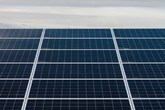IEA: Spending on clean energy falling short
Published by Bella Weetch,
Editorial Assistant
Energy Global,
Spending on clean energy amounts to 3% of the US$16.9 trillion that governments have so far mobilised to bolster their economies from the recession triggered by the COVID-19 pandemic, according to the latest update from the International Energy Agency (IEA). The share is up from approximately 2% in July 2021 but still leaves global CO2 emissions on an upward trajectory, with 2021 set to be the second largest annual increase in history.
Governments have increased the amount of their economic recovery spending that is going towards clean energy investments by 20% in the past three months, new estimates from the IEA’s Sustainable Recovery Tracker show. But the spending is highly imbalanced geographically – with most of it taking place in advanced economies rather than the developing world – and still falls short of what is needed to put global CO2 emissions into sustained decline.
“We are witnessing an uneven and unsustainable recovery from last year’s economic crisis – a recovery that consists of huge growth in fossil fuel consumption while leaving behind nearly 80% of the world’s population in the shift towards a new and cleaner energy economy,” said Fatih Birol, the IEA Executive Director. “On the eve of the G20 Leaders’ Summit and the COP26 Climate Change Conference, governments of major economies need to show they are ready to drive a massive scaling up of investments in clean energy globally and steer the world onto a safer path. Failure to put their money where their mouth is could well mean failure to keep the door open to limiting global warming to 1.5°C.”
The IEA introduced the Sustainable Recovery Tracker in July 2021 to assess how government recovery measures to date compare with the Sustainable Recovery Plan, which the agency published in 2020. The IEA Plan recommended US$1 trillion of annual spending on clean energy measures worldwide over a three-year period that could put the world on track with international climate goals while boosting global economic growth and employment. The Sustainable Recovery Tracker, which was launched as a contribution to Italy’s Presidency of the G20, will continue to be updated regularly, as requested by G20 members.
In the past three months, 40 new funding announcements have been made, and 140 previously announced spending programmes have added new details or spending. These expand on the 800 spending policies previously covered in the IEA’s Sustainable Recovery Tracker. In total, governments have now earmarked an estimated US$470 billion for clean energy investment between now and 2030 – an increase of US$90 billion, or 20%, from the level seen in July 2021.
Analysis of these policies shows that advanced economies are moving strongly towards sustainable recoveries, but the global total amounts to only around 40% of the level called for under the IEA Sustainable Recovery Plan. This is nonetheless an increase from where things stood in July 2021, when the share was estimated at 35%.
Some advanced economies – including France, Japan, the UK and the US – are in the process of crafting and approving new investment programmes. This could put advanced economies within reach of their share of the Sustainable Recovery Plan, assuming government support quickly reaches viable projects amid supply chain disruptions and market turbulence.
However, emerging and developing economies – where the majority of clean energy investments need to occur in the next decade – are being left behind. Across emerging and developing economies as a whole, spending on clean energy measures is projected to be only around 20% of the level recommended in the Sustainable Recovery Plan, with little new spending in the pipeline due to tightening fiscal constraints as a result of the pandemic. India stands out as an exception with its announcement of potentially substantial new spending through the Gati Shakti infrastructure plan, which could include new provisions for clean energy investments.
“The shortfall in sustainable recovery spending in emerging and developing economies is a global problem that requires a global solution,” said Dr Birol. “These countries do not have the luxury of cheap financing that many advanced economies enjoy. The world urgently needs to come up with bold measures to mobilise and channel clean energy investment to emerging and developing economies on a major scale. This is where it is needed most and has the biggest bang for its buck in tackling emissions.”
For the first time, the IEA Tracker also assessed the employment impacts associated with sustainable recovery spending. It estimates current government spending plans are set to create demand for an additional 5 million jobs in clean energy globally by 2023, most of them in the buildings sector, as well as in electricity infrastructure, renewables and electric vehicles. A lack of skilled workers to fill these positions could be a major bottleneck, underscoring the central role of training, particularly developing new skills for workers moving to different industries, in ensuring a successful sustainable recovery.
For more news and technical articles from the global renewable industry, read the latest issue of Energy Global magazine.
Energy Global's Autumn 2021 issue
The Autumn issue of Energy Global features a varied spectrum of in-depth technical articles detailing recent projects, future projections, and technological advancements in the renewables sector, from companies including MISTRAS Group, Fugro, X1 Wind, Sulzer, and more.
Read the article online at: https://www.energyglobal.com/special-reports/29102021/iea-spending-on-clean-energy-falling-short/
You might also like
ACCIONA Energía to build two new photovoltaic plants in Italy
ACCIONA Energía to build two new photovoltaic plants in Italy after securing 151 MW in public auction.

